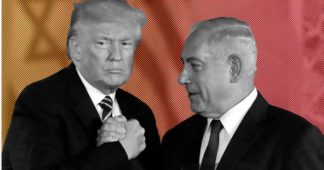By Dimitris Konstantakopoulos
30/04/2025
Unlike the more statist and protectionist far right of the interwar period, today’s far right is an ally of neoliberalism.
In a previous article https://www.defenddemocracy.press/crisis-of-globalization-crisis-of-the-left-and-the-rise-of-the-far-right-2/ we explained why the economic, political, and ideological model of globalization ceased to function in favor of the U.S., the collective West, and capitalism. The West and capitalism—the big capital, global banks, and multinational corporations, those who hold the real power on the planet—must restructure their dominance on a new basis in an effort to maintain their global hegemony. At the same time, public opinion shows a growing demand for radical solutions, whether from the left or the right.
To this end, a segment of big capital is turning to new political forces that will now rely on nationalism, aiming to rally their fragmented domestic base after 30 to 40 years of neoliberalism. They are abandoning democratic ideology and the “happy globalization” narrative, embracing instead a program of intensifying authoritarianism domestically and war abroad—even large-scale wars against Russia and China.
At this point, it is worth recalling that as early as Trump’s first term in the White House, the strategic doctrine of the United States shifted. Russia and China replaced “terrorism” (by which is meant radical Islam and anti-imperialist movements and regimes) as the primary adversaries of the U.S. (It would be good for Trump’s admirers, aside from flooding us with their love for the American far right, to study these phenomena a bit rather than spouting whatever comes to mind about things they ignore.)
From the world of Soros and Fukuyama, we are moving to the world of Huntington and Netanyahu—to the world of “clashes of civilizations” and rising Zionism, to thinkers who have long openly rejected democracy, humanism, and international law as established by the Universal Declaration of Human Rights after the French Revolution and the U.N. Charter after the victory of the USSR and its allies—the resisting European peoples—over Nazism in 1945.
In this direction, various forces of the far right—radical, “new,” and even fascist in some cases—are beginning to mobilize, emerging and gaining strength especially after 2014 in the West, as well as in Ukraine (with the support of the West and Israel).
The fact, however, that the same “globalists” are involved in the war against Russia in Ukraine, and later tolerate the genocide of Palestinians in Gaza—combined with the alignment of much of the so-called “radical” left in the West with NATO in Ukraine—will greatly facilitate the rise of the far right, allowing it to present itself as a pro-peace force in Ukraine and as no worse in the Palestinian issue. Had this not happened—had the war in Ukraine suddenly erupted under Trump, or had Biden handled the Ukrainian issue more cautiously, avoiding at least constant concessions to the Western “War Party,” or had he not politically and militarily supported the genocide of the Palestinians to the end—it is certain that Trump could not have won the elections. (It is not impossible that all this is the result of deep strategic planning by forces within the Western establishment, where the term “West” certainly includes Israel and the various powerful Zionist lobbies around the world.)
Unlike the more statist and protectionist far right of the interwar period, today’s far right is an ally of neoliberalism. Authoritarianism is needed not only to unleash global war but also to address the colossal U.S. debt through massive cuts to all state social spending domestically—and tomorrow in Europe—as well as through overt threats and seizures (Panama, Greenland, Canada, Ukraine’s minerals, Gaza).
This transformation in the mode and model of capitalist dominance bears similarities (as well as some significant differences) to the totalitarian transformation of German capitalism in the 1930s. The model of democratic or ostensibly democratic “rules-based” dominance is gradually being abandoned in favor of more authoritarian and arbitrary forms and ideologies of governance.
In 1930s Germany, the political “fuel” for Hitler was provided by World War I, mass dissatisfaction with the Weimar regime, the humiliating and devastating terms of the Treaty of Versailles, and the aftermath of the 1929 economic crisis. However, the German turn toward the far right would have been unthinkable without the betrayals and cowardice of both the German Social Democrats and the German Communist Party, who not only failed to fight for power but also proposed no serious resistance to the rise of Nazism.
By analogy, the same is observed today. A prerequisite for the current rise of the far right is the crisis and bankruptcy of the Left. And this is precisely what happened, especially after 2015. We will examine this factor in detail in future articles.
Translated from Greek by Christian Haccuria










